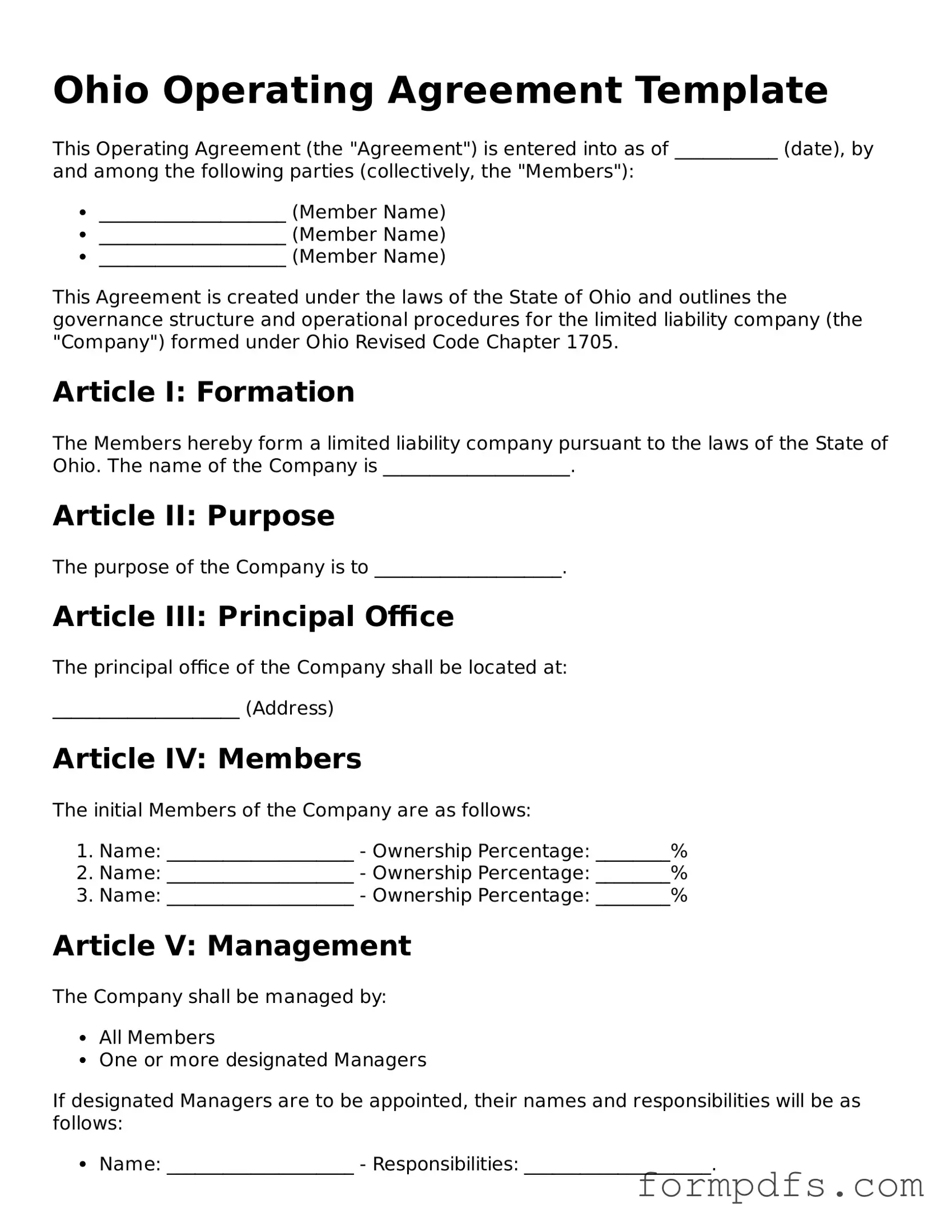What is an Ohio Operating Agreement?
An Ohio Operating Agreement is a legal document that outlines the internal management structure and operational procedures of a limited liability company (LLC) in Ohio. This agreement serves as a foundational blueprint for how the LLC will function, detailing the roles and responsibilities of its members, how profits and losses will be distributed, and the procedures for making important business decisions. While Ohio law does not require an LLC to have an Operating Agreement, having one is highly advisable as it helps prevent misunderstandings among members and provides a clear framework for operations.
Who should create an Operating Agreement in Ohio?
All members of an LLC in Ohio should consider creating an Operating Agreement, regardless of the size of the company. This includes single-member LLCs, where the sole owner can outline their own operational guidelines. For multi-member LLCs, the agreement becomes even more crucial as it helps to clarify each member's rights and responsibilities. By establishing clear expectations, the Operating Agreement can prevent conflicts and provide a structured approach to decision-making and profit-sharing.
What should be included in an Ohio Operating Agreement?
An effective Ohio Operating Agreement should cover several key elements. First, it should identify the members of the LLC and their respective ownership percentages. Next, it should outline the management structure, specifying whether the LLC will be member-managed or manager-managed. Additionally, the agreement should detail how profits and losses will be allocated, the process for adding or removing members, and the procedures for resolving disputes. It is also wise to include provisions for amending the agreement in the future, ensuring that the document remains relevant as the business evolves.
Is an Operating Agreement legally binding in Ohio?
Yes, an Operating Agreement is legally binding in Ohio, provided it is properly drafted and executed by all members of the LLC. This means that once the agreement is signed, it holds the same weight as any other contract. However, it is important to ensure that the agreement complies with Ohio law and accurately reflects the intentions of the members. If disputes arise, a well-structured Operating Agreement can serve as a critical reference point for resolving issues and enforcing the rights of the members.
